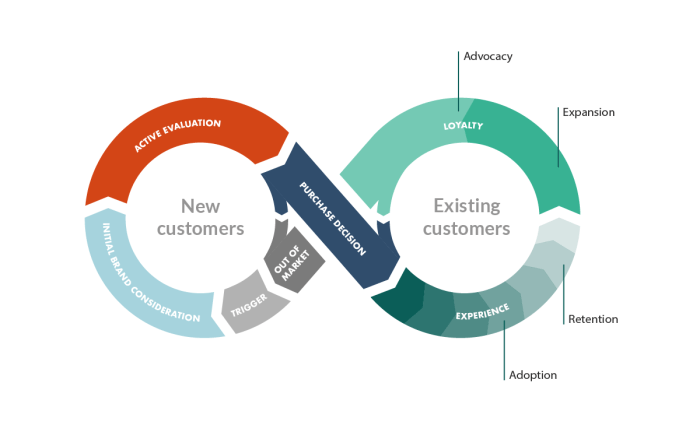Customer Success Tips provide the key to unlocking business success and growth, offering insights into building strong relationships, effective communication, smooth onboarding, proactive support, and measuring success through data analytics. Get ready to dive into the world of customer success with these essential tips!
Importance of Customer Success

Customer success is crucial for a business as it focuses on ensuring that customers achieve their desired outcomes while using the product or service. By helping customers succeed, businesses can build long-lasting relationships, increase customer loyalty, and drive revenue growth.
Examples of Companies Excelling in Customer Success
- Amazon: Known for its exceptional customer service and personalized recommendations, Amazon has set the standard for customer success in the e-commerce industry.
- Salesforce: With its dedicated customer success team and robust training programs, Salesforce has been able to retain and grow its customer base over the years.
- Zappos: Renowned for its focus on customer satisfaction, Zappos has built a loyal customer following through its commitment to customer success.
Impact of Customer Success on Long-Term Business Growth
Customer success plays a significant role in driving long-term business growth by fostering customer satisfaction, retention, and advocacy. Happy customers are more likely to renew their subscriptions, make repeat purchases, and refer new customers to the business. This, in turn, leads to increased revenue, profitability, and sustainable growth for the company.
Building Strong Customer Relationships
Building strong relationships with customers is crucial for the success of any business. By establishing a connection based on trust and understanding, you can increase customer loyalty, drive repeat business, and even attract new customers through positive word-of-mouth.
Strategies for Building Strong Relationships
- Personalize Communication: Tailor your interactions with customers based on their preferences, needs, and past interactions. This shows that you value them as individuals and are committed to meeting their specific needs.
- Be Proactive: Anticipate customer needs and reach out to offer assistance or solutions before they even ask. This proactive approach demonstrates your dedication to customer satisfaction.
- Show Empathy: Empathize with customers’ concerns and frustrations, and show genuine care and understanding. This human touch can go a long way in building trust and rapport.
Importance of Personalized Communication
Personalized communication is key in customer success as it helps you build a deeper connection with your customers. By understanding their individual preferences, you can tailor your interactions to meet their specific needs, leading to higher satisfaction and loyalty.
Tips for Listening to Customer Feedback, Customer Success Tips
- Actively Listen: Pay close attention to what customers are saying without interrupting or jumping to conclusions. Show that you value their feedback by giving them your full attention.
- Ask for Clarification: If something is unclear or you need more information, don’t hesitate to ask for clarification. This shows that you are genuinely interested in understanding their feedback.
- Take Action: Once you have gathered feedback, take concrete steps to address any issues raised or implement suggestions for improvement. Customers appreciate when their feedback is taken seriously and acted upon.
Customer Onboarding Best Practices

When it comes to ensuring customer success, a smooth onboarding process is key. It sets the tone for the entire customer journey and can greatly impact their overall experience with your product or service. By providing new customers with a seamless onboarding experience, you increase the likelihood of them becoming long-term, satisfied customers.
Importance of a Smooth Onboarding Process
Efficient onboarding is crucial in helping customers understand your product or service quickly and effectively. It reduces the time it takes for them to start using your offering to its full potential, which in turn leads to quicker realization of value.
Moreover, a smooth onboarding process can help prevent customer frustration and reduce the likelihood of churn. When customers feel supported and guided during their initial interactions with your product, they are more likely to see the value it brings and continue their relationship with your brand.
Ways to Streamline the Onboarding Experience
- Provide clear and concise instructions to guide customers through the setup process.
- Offer personalized onboarding experiences tailored to each customer’s needs and preferences.
- Utilize automation tools to streamline repetitive tasks and ensure consistency in the onboarding process.
- Collect feedback from customers to continuously improve and optimize the onboarding experience.
Examples of Successful Customer Onboarding Strategies
Slack, a popular team communication tool, offers interactive tutorials and personalized tips to help new users get started quickly and efficiently.
HubSpot, a leading CRM platform, provides dedicated onboarding specialists to guide customers through the setup process and offer ongoing support.
Zoom, a video conferencing platform, offers a comprehensive knowledge base with step-by-step guides and video tutorials to help new users navigate the platform with ease.
Proactive Customer Support: Customer Success Tips
Proactive customer support is all about anticipating the needs of your customers and addressing any issues before they even arise. By taking a proactive approach, businesses can enhance customer satisfaction, loyalty, and overall success.
Anticipating Customer Needs
- Utilize customer data and analytics to predict common issues or trends.
- Offer proactive solutions or guidance through targeted communication.
- Implement feedback mechanisms to gather insights and improve preemptive support.
Resolving Issues Ahead of Time
- Provide self-service resources for quick problem-solving.
- Offer proactive outreach through various channels, such as email or chat.
- Train support teams to identify potential issues and address them promptly.
Role of Technology
- Use AI-powered chatbots for instant responses and issue resolution.
- Implement customer success platforms to track and monitor customer interactions.
- Leverage data analytics tools to identify patterns and proactively address customer concerns.
Measuring Customer Success
In order to effectively measure customer success, businesses need to identify key metrics that can provide insights into how well they are meeting customer needs and expectations. Tracking these metrics regularly is crucial for evaluating the effectiveness of customer success strategies and making necessary adjustments. Data analytics plays a vital role in analyzing these metrics and identifying areas for improvement.
Key Metrics for Measuring Customer Success
- Customer Satisfaction Score (CSAT): A metric that measures how satisfied customers are with the product or service they received.
- Net Promoter Score (NPS): A metric that measures customer loyalty and likelihood to recommend the product or service to others.
- Customer Churn Rate: The percentage of customers who stop using the product or service over a specific period of time.
- Customer Lifetime Value (CLV): The total revenue a business can expect from a customer throughout their entire relationship.
Importance of Tracking Customer Success Metrics Regularly
Regularly tracking customer success metrics allows businesses to stay informed about customer satisfaction levels, identify trends, and address any issues promptly. It also helps in measuring the impact of customer success initiatives and making data-driven decisions to improve overall customer experience.
Utilizing Data Analytics for Improving Customer Success Strategies
Data analytics enables businesses to analyze large volumes of customer data to gain valuable insights into customer behavior, preferences, and pain points. By leveraging these insights, businesses can tailor their customer success strategies to better meet the needs of their customers and drive business growth.